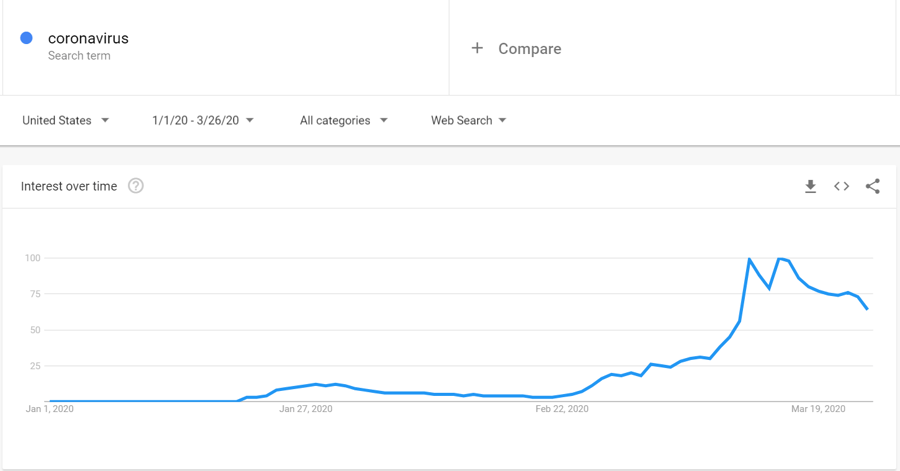During normal times in business, customer acquisition is the top priority of CMOs, per Nielsen. Under the current conditions resulting from COVID-19, specific priorities are shifting, but a healthy e-commerce business is more vital than ever. At Stella Rising, I work across a portfolio of brands with the core objectives of e-commerce sales growth or lead gen acquisition.
Customer acquisition can be more of a struggle in difficult times, and my job is to navigate e-commerce businesses through these challenges. I am approaching every method or tactic with a heightened level of thoughtfulness and consideration, understanding that any investment made now really needs to have a return. In fact, we have driven significant growth for e-commerce clients over the past several weeks. In this post, I address how we’ve pivoted to drive acquisition in the current climate.
KNOW YOUR PRODUCT AND KNOW YOUR CUSTOMERTo start, our team asks brands to really consider: where does your product sit right now? We recommend customer acquisition efforts only for brands with products currently in demand. Brands with products that are less relevant right now (those in luxury fashion, for example) should instead focus their current e-commerce efforts on finding efficiencies, rather than on new customer acquisition.
Next, our team recommends a deep, holistic understanding of your current customer. This often surprises people, prompting them to ask: “I’ve already converted my existing consumers, why are they critical to finding and converting new customers?” Understanding your core consumer is important so that new consumer profiles can be crafted intelligently, while existing customers can be siloed from acquisition strategies. Understanding existing customers is also essential for tactics such as lookalike targeting. Lookalike targeting demands that we consider the psychological and demographic makeup of similar-minded individuals. Applying the logic of current consumers—and modeling off our knowledge of them—allows us to find new customers digitally.
Understanding customers right now also means approaching them mindfully—whether they are old or new. Take your time and intelligently craft any messaging.
YOU HAVE TO DIGEST THE DATA…
The biggest misconception I find in talking with brands is that acquisition channels (Facebook, Google, etc.) cannot be scaled effectively. They can, but they must be done with a carefully layered approach over time. All data must be combed through and actively analyzed in as real-time a manner as possible. An expert understanding of data illustrates the direct impact that scaling channels has, while also factoring in their impact on existing programs. This combination allows us to unlock where budget should truly be utilized; any other method spends dollars on a whim. Also: new customers will never be acquired through an over-reliance on third-party data; first- and third-party data must be used intelligently, and together.
…AND THEN TAKE ANOTHER LOOK
In the ever-changing current climate, there are additional layers we must pay attention to when digesting the data. In the below image, we looked at U.S. search volume for the term “coronavirus.”

Coronavirus searches climbed steadily in early March, but March 12th represented “mass volume,” meaning that Google captured as much as an +80% in coronavirus search volume from the prior day, far exceeding any other single day jump. This level of volume stayed strong, only beginning a statistically significant decline on March 21st.
We believe that the week of March 12th represented when the panic hit, whereas by March 21st consumers felt more knowledgeable—and calmer. Our client portfolio reflected this; we saw a near identical trend, with all brands beginning to decline around March 12th. Now, after the 21st, declines have mostly flattened, and an uptick has begun again. Among the e-commerce brands I work with have seen sales up by 16%-50%.
SHIFT AWAY FROM AWARENESS
In the short term, I recommend that most brands pull back on upper funnel awareness tactics. Finding and converting “new to brand” users right now is more difficult than ever, so we advise a more nuanced approach. We have now centered our digital efforts on the consideration and conversion phases of our media plans. This way, we can actively identify hand raisers in the market. To strengthen that strategy, we are paying close attention to the specific items receiving outsize attention, and then changing our plans to focus on those products. Longer-term, brands will need to continue to build awareness in an ever-more-crowded e-commerce environment.
E-commerce is always ever-changing, but now is an intense period as consumers respond to their new reality. Digital marketers need to respond in real-time, using informed insights to apply customer acquisition, scale back on awareness, or shift tactics entirely. The brands that strengthen their digital businesses now will have a chance to shine—and a stronger future.



COMMENTS